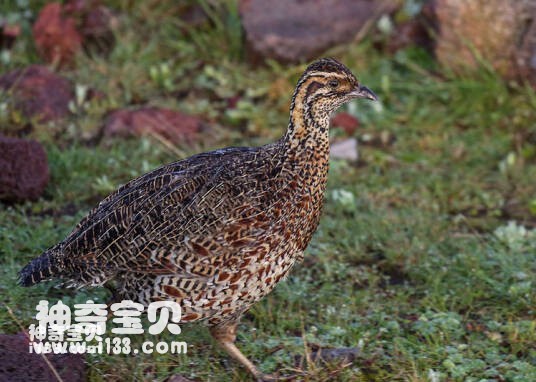Scleroptila elgonensis
IUCN
LCBasic Information
Scientific classification
- name:Scleroptila elgonensis
- Scientific Name:Scleroptila elgonensis,Elgon Francolin
- Outline:Landfowl
- Family:Chickeniformes P.family R.Partridge
Vital signs
- length:About 32 cm
- Weight:370-530g
- lifetime:No textual research information is available
Feature
Underbody chestnut color, full of fine spots and black stripes
Distribution and Habitat
It is found in Kenya and Uganda.
It lives in mountainous wastelands and heathlands between 2400-4000 meters above sea level. They live at an altitude of 1600 meters. Prefers to forage near bushes rather than out in the open. Live near wet grass or reed beds near small open alpine lakes.
Appearance
The partridge is 32 cm long and weighs 370-530 grams. Both sexes are the same, but the females have no spacing. The head and nape of the adult bird are dark brown with pale yellow spots. There are many black marks from the head to the neck and on the sides. Dark spots below the chest. The rest of the lower body is chestnut colored, full of tiny spots and black stripes. The rump is dark brown with red and light stripes. The primary and secondary feathers are bright red, while the rest are grayish brown. The tail is dark brown. It has a dark-brown beak with yellow spots at the base of the lower jaw; Iris brown; The legs are pale yellow.
Details
The Partridge Elgon Francolin (Scleroptila elgonensis) has no subspecies.

Listed on the International Union for Conservation of Nature (IUCN) 2016 Red List of Threatened Species ver 3.1 - Near Threatened (NT).
Protect wild animals and eliminate wild meat.
Maintaining ecological balance is everyone's responsibility!








